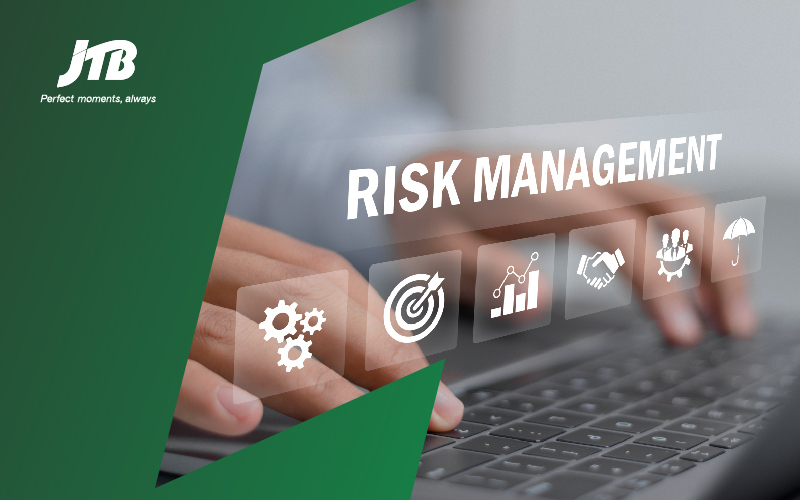In a world facing environmental challenges, it’s crucial to do things that help our planet. One way to do this is by organizing sustainability events. These events are big meetings where people come together to work on these issues. They’re not just about talking; they’re about doing things to make sure we have a greener future that we all share.
As event organizers and attendees become more conscious of their environmental impact, companies need to develop a powerful sustainability strategy that aligns with their brand values.
Crafting a sustainability strategy requires careful consideration and planning. From reducing waste and carbon emissions to promoting eco-friendly practices, a comprehensive approach is necessary to create truly sustainable events. By incorporating green initiatives, such as using renewable energy sources and implementing eco-friendly transportation options, companies can showcase their commitment to the environment and resonate with environmentally-conscious consumers.
Let’s explore the future of sustainable events and provide actionable insights on how to create a powerful sustainability strategy that drives positive change.
What are Sustainable Events?
Sustainable events are those that are designed and executed to minimize their negative impact on the environment while maximizing positive social and economic outcomes.
These events prioritize the use of renewable resources, waste reduction, and eco-friendly practices. By adopting sustainable measures, companies can not only reduce their carbon footprint but also contribute to the overall well-being of the planet.
Not just that. These events go beyond just recycling and reducing waste. They encompass a holistic approach that considers every aspect of event management including planning and execution, from sourcing materials and energy to transportation and waste management.
By adopting sustainable practices, companies can set themselves apart from their competitors and attract environmentally-conscious consumers.
Why Sustainability in Events is Required in 2023?
Sustainability in events holds significant importance, and recent statistics underscore a growing commitment to environmental awareness. Notably, the number of consumers who believe they can still save the planet has risen from 51% to 56% between 2021-22. This positive shift reflects a heightened sense of urgency and responsibility among individuals.
Now more than ever, events play a crucial role in addressing environmental concerns for several key reasons:
- Helping the Environment: Events can have a big impact on the environment, and sustainable practices aim to reduce this impact by using fewer resources and creating less waste.
- Dealing with Climate Change: We’re more aware than ever of climate change, and sustainable events play a role in reducing the emissions that contribute to it.
- Saving Resources: With a growing global population, there’s a need to be mindful of how we use resources like water and energy. Sustainable events focus on using resources efficiently to make them last longer.
- Being Ethical: There’s a rising expectation for events to be socially responsible. Sustainable events promote fair labor, ethical practices, and community engagement.
- Meeting Attendee Expectations: People attending events care more and more about the environmental and ethical practices of the events they go to. Choosing sustainability aligns with these values, creating a positive impression.
- Following Regulations: Many places are making rules about how events should be environmentally friendly. Following sustainable practices helps event organizers meet these rules.
- Using Technology: New technologies make it easier to be eco-friendly in events, from using energy-efficient lighting to finding digital alternatives for traditional event materials.
- Saving Money in the Long Run: While it might cost more at the start, being sustainable often leads to saving money over time. Practices like reducing waste and using resources wisely can cut down on overall costs.
- Connecting Globally: Events are more connected globally, and sustainability is a way to collaborate globally, sharing best practices and contributing to worldwide efforts to tackle environmental issues.
- Staying Relevant: As sustainability becomes more important in society, events that embrace it remain appealing and aligned with what people expect, making them more future-proof.
By knowing the importance, now you can not only meet the expectations of your customers but also contribute to a healthier and more sustainable future.
Now let’s discover how to make sustainable events and leverage them.
Steps to Create Sustainable Events
Creating sustainable events involves a thoughtful and strategic approach to minimize environmental impact and promote responsible practices. Here are steps to help you plan and execute sustainable events:
Step 1: Set Clear Sustainability Goals:
Define specific sustainability objectives for your event, such as reducing waste, conserving energy, or promoting local community involvement. These goals should be specific, measurable, achievable, relevant, and time-bound (SMART). Communicate these goals to your team, vendors, and participants to create a shared commitment.
Step 2: Choose an Eco-Friendly Venue:
Select venues with eco-friendly certifications like JTB India. We consider the venue’s energy efficiency, waste management, and accessibility to public transportation.
Step 3: Promote Paperless Communication:
Minimize paper usage by using digital invitations, event programs, and communication tools. Encourage attendees to use mobile apps for schedules, maps, and information.
Step 4: Sustainable Catering:
Work with caterers who prioritize local, organic, and sustainably sourced food. Opt for reusable or compostable tableware and utensils to reduce single-use plastic. The USDA reports that “food waste is estimated at between 30-40 percent of the food supply.” Having sustainable food options is an important consideration for your next event.
Step 5: Waste Reduction and Recycling:
Implement a comprehensive waste management plan, including clearly labeled recycling and composting stations. Minimize single-use items and encourage reusable alternatives.
Step 6: Energy Efficiency:
Use energy-efficient lighting and equipment. Consider renewable energy sources, such as solar or wind power, for your event.
Step 7: Transportation Options:
Choose a venue with good public transportation access or provide shuttle services to reduce individual car travel. Promote ridesharing and cycling options for participants.
Step 8: Water Conservation:
Use water-saving technologies for landscaping and restroom facilities. Encourage attendees to use refillable water bottles, providing water refill stations.
Step 9: Green Partnerships:
Collaborate with eco-friendly vendors and sponsors who share your commitment to sustainability. Support local businesses and communities in the planning and execution of your event.
You can also explore the possibility of offering sustainable travel packages in partnership with JTB India. Include options for carbon offsetting, eco-friendly activities, and accommodations with strong sustainability credentials.
Step 10: Educational Initiatives:
Integrate sustainability into the event program through workshops, talks, or interactive sessions. Raise awareness about environmental issues and provide practical tips for sustainable living.
Step 11: Measure and Report:
Evaluate the environmental impact of your event by tracking key metrics, such as waste diversion rates and energy consumption. Share the results with stakeholders to showcase the success of your sustainability efforts.
Step 12: Feedback and Continuous Improvement:
Collect feedback from participants regarding the sustainability initiatives implemented. Use this feedback to refine and improve your sustainability practices for future events.
By integrating these steps into your event planning process, you can create a positive impact on the environment while delivering a memorable and responsible experience for your participants.
Now let’s discover the benefits that you can get after implementing it.
Benefits of Implementing Sustainability Event Strategy
Sustainable events offer a multitude of benefits as follows:
- Positive Environmental Impact: Reducing waste and conserving resources for a healthier planet.
- Cost Savings: Sustainable measures lead to long-term operational expense reductions.
- Enhanced Brand Image: Prioritizing sustainability builds a positive brand reputation.
- Increased Attendee Engagement: Green activities and practices enhance the overall event experience.
- Compliance with Regulations: Staying aligned with evolving environmental standards and regulations.
- Attracting Sponsors and Partners: Like-minded sponsors are drawn to organizations that prioritize eco-friendly practices.
- Employee and Stakeholder Satisfaction: Prioritizing sustainability boosts internal stakeholder satisfaction and loyalty.
- Innovation and Differentiation: Embracing sustainability encourages innovation and distinguishes leaders in the industry.
- Long-Term Resilience: Sustainability measures contribute to events’ long-term adaptability and resilience.
- Community and Social Impact: Positive contributions to local communities and businesses.
- Measurable Impact and Reporting: Transparent reporting builds trust and demonstrates commitment to improvement.
- Adaptation to Consumer Trends: Aligning with eco-conscious consumer preferences for event relevance.
- Fostering a Culture of Responsibility: Promoting a culture of responsibility within the organization.
- Global Collaboration: Contributing to a global movement for environmental sustainability.
- Personal Satisfaction and Well-Being: Participants experience personal satisfaction from contributing to positive outcomes.
These are the benefits that you can leverage by implementing sustainability events, but do you want to know some best practices?
Best Sustainable Events Practices and Suppliers
Choosing sustainable event practices and suppliers is crucial in reducing the environmental impact of events. This includes sourcing eco-friendly materials, implementing waste reduction and recycling programs, and using renewable energy sources. When selecting suppliers, it is important to consider their sustainability practices and certifications, such as ISO 20121 for event sustainability management.
Here are the best practices that you should incorporate to make the event successful:
1. Green Venue Selection
When selecting a venue for your event, prioritize locations that have integrated sustainable practices into their operations. Look for venues with certifications such as LEED, which signifies adherence to high environmental standards in construction and operation.
Consider aspects such as energy efficiency, waste management, and water conservation. Choosing a venue with a commitment to sustainability sets the tone for an eco-friendly event and contributes to the overall reduction of environmental impact.
2. Waste Reduction and Recycling:
Implementing an effective waste management plan is crucial to minimize the ecological footprint of your event. Focus on reducing the use of single-use items and collaborate with suppliers who offer sustainable, recyclable materials for event collateral, signage, and promotional items.
Encourage recycling throughout the event and ensure proper disposal of waste. By addressing waste reduction comprehensively, you contribute to a more sustainable and environmentally responsible event.
3. Sustainable Catering and Food Choices:
Opt for catering companies that prioritize sustainable food practices. This includes sourcing locally, using organic ingredients, and choosing seasonal menus. Not only does this support local communities, but it also reduces the carbon footprint associated with food production and transportation.
To minimize food waste, accurately estimate attendance and consider donating excess edible food to local charities. By making conscious choices in catering, you contribute to the overall sustainability of the event.
4. Eco-Friendly Transportation:
Promote eco-friendly transportation options for event attendees to reduce the environmental impact of travel. Encourage the use of public transit, carpooling, biking, or walking, and provide information on sustainable transportation choices in event communications.
If feasible, consider arranging shuttle services or providing electric vehicle options for transportation to and from the venue. Additionally, explore carbon offset options for unavoidable travel to further mitigate the event’s impact on the environment.
5. Sustainable Event Technology and Supplies:
Leverage technology to reduce the environmental impact of your event. Provide digital alternatives to printed materials, such as digital programs, registration, and communication tools. Utilize QR codes for easy access to event information without the need for physical printouts.
When selecting event supplies, prioritize suppliers that offer sustainable and ethically sourced materials for banners, signage, and promotional items. Opt for energy-efficient audiovisual equipment and lighting to minimize energy consumption during the event. By incorporating these sustainable practices, you can ensure that your event aligns with environmental and social responsibility.
With these best practices, companies can create a positive impact and inspire others to do the same.
Now it’s time to measure the impact of your sustainability event.
Measure and Evaluate the Success of your Sustainability Strategy
Here’s how you can measure the success of your sustainable event to understand the impact of your efforts and identify improvement areas:
- Establish a Strong Sustainability Strategy: Once you’ve developed a robust sustainability strategy for your event, effective communication becomes essential for engaging attendees, sponsors, and the broader community.
- Transparent and Authentic Communication: Transparency and authenticity are crucial for building trust and garnering support for your sustainability initiatives.
- Incorporate Sustainability Messaging: Start by weaving sustainability messages into your event marketing materials. Highlight your commitment in invitations, promotional emails, and social media posts.
- Use Compelling Visuals and Language: Utilize engaging visuals and language to convey the significance of your sustainability efforts and educate attendees on how they can contribute.
- Create Opportunities for Engagement: During the event, provide opportunities for attendees to learn and engage with sustainability initiatives. Set up educational booths or displays showcasing the event’s environmental impact and ways attendees can reduce their carbon footprint.
- Offer Incentives: Encourage sustainable actions by offering incentives such as discounts or rewards. For example, incentivize the use of reusable water bottles or carpooling.
- Leverage Digital Platforms: Extend your sustainability message beyond the event using digital platforms. Share post-event updates and success stories on social media, blogs, and newsletters.
- Partner with Influencers: Consider collaborating with influencers or sustainability advocates to amplify your message to a wider audience.
- Inspire Action: Leverage the power of digital communication to inspire others to take action and contribute to sustainability efforts.
And here comes the trends.
Sustainability Events Trends
As we wrap up our exploration of sustainable events, let’s take a glance at the trends shaping the future of eco-conscious gatherings:
- Going Carbon Neutral: Events are actively working towards not just reducing but offsetting their carbon footprint for a net-zero impact.
- Circular Event Design: Embracing circular practices, events are minimizing waste through reusable materials and innovative recycling solutions.
- Virtual and Hybrid Experiences: The rise of virtual and hybrid events is reducing travel and promoting paperless communication, aligning with eco-friendly principles.
- Sustainable Tech Integration: Technology is aiding sustainability, with digital platforms and smart energy systems reducing resource consumption.
- Biodiversity and Nature Themes: Events are gravitating towards venues that celebrate and preserve natural environments, incorporating nature-inspired themes.
- Inclusive Sustainability: Sustainability now extends beyond the environment, embracing social responsibility, fair labor practices, and community engagement.
- Sustainable Food Choices: Catering goes beyond local and organic, embracing plant-based and zero-waste menus as a hallmark of eco-conscious events.
- Transparent Reporting: Transparent reporting on sustainability efforts is becoming standard, offering clear insights into events’ environmental and social impact.
- Green Certifications: Events are seeking recognition through green certifications, validating their commitment to eco-friendly practices.
- Stakeholder Collaboration: Collaboration among organizers, sponsors, vendors, and communities is amplifying the impact of sustainability initiatives.
In essence, these trends signal not just a momentary shift but a fundamental transformation in how we approach events. By embracing these practices, we stride towards events that not only impress but also contribute positively to the planet and society. Let’s continue innovating and collaborating for a future where every event is a sustainable success.
Create Your Sustainability Event Strategy Today – Know More Here


















